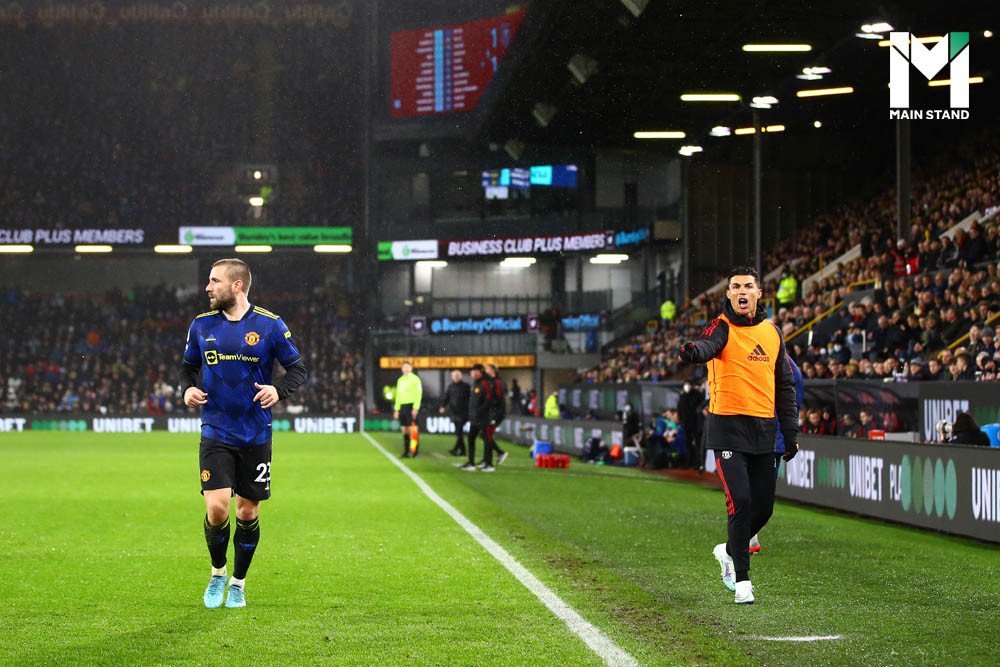
“The more players run, the more they win” is a belief that has been held onto by football players for ages.
Sometimes such a principle is proven wrong when defenders pack the penalty area. However, sometimes this idea works, exemplified by how Manchester United players made a 114-km run throughout the playtime and eventually triumphed over Liverpool 2-1.
We need scientific proof to substantiate this theory, and today we will dwell deeper into intense running plus intelligence with Main Stand.
Running helps a team to win but poses a physical problem
Over the past decade, sprinting has played a significant role in elite football leagues. Explosive pressing in the first 10-15 minutes is generalized in today’s football world.
That said, if football players in the 2000s embraced maximum-intensity runs, they would have run out of stamina even before the first half was over.

On the other hand, today’s players’ pace is constant throughout both halves. That shows players are more physically prepared to run on the pitch than their seniors due to a change in football trends.
A study in 2016 indicates that Premier League players’ sprinting has increased by 50% over the past decade. However, they need to bear the risk that a couple of minutes of full speed run can slow down their pace; they could be five minutes slower.
To get a clearer picture, imagine that you order a football player to run intensely for 10 minutes without any rest, and you will see that they will be out of breath and unable to run in the next 20 minutes. Of course, players can run out of physical strength anytime, depending on each player, but it will happen at any point of the 90-minute playtime.
If so, in general, strenuous running might be destructive. Low-profile teams often attempt to win over the top teams with rapid bursts of acceleration, but they end up tired in the latter half and quickly lose possession, goal and the game as always.
Simply put, head coaches have only two choices: whether they ask their players to run to chase after the ball or they ask them to stand still in the penalty area.
The latter is the only way to prevent players from losing a goal unless they adopt pressing, which is today’s football tactic.

“The general pacing of football has increased dramatically, and it seems as if the nearly constant intensity of the game, which was characteristic of the sport a couple of years back, has been replaced with a lot of maximum intensity sprinting periods followed by resting periods,” said Magni Mohr from the University of the Faroe Islands.
Compare the defensive Park The Bus game with a high-pressing one; clearly, the latter makes a better choice. Magni Mohr’s study confirms that intensive running has become a regular thing in modern football. The only challenge he highlights is that high-intensity running in a short period can pose long-term effects on players; they would be more prone to tiredness.
Peter Krustrup, a University of Southern Denmark professor, echoed Mohr’s research. He suggested that modern footballers can be so tired that they hobble off in the last 20-25 minutes of the match, leading both sides to score unceasingly.

Will high-intensity running reward a football team with a greater chance of winning? The answer is ‘yes’, theoretically, as all studies reveal strenuous running is standard in football. Moreover, it shows how football has evolved and resorted to playing systems that work better.
But the problem is that players do not have enough athletic power to allow them to run with top-most speed throughout the 90-minute duration.
So what strategies coaches adopt to train their players to run at maximal velocity and create the most goal-scoring chances during playtime has become an intriguing question among scientists.
Running with intelligence
People, at large, might view that the easiest way to boost players’ stamina is “running a lot during training sessions” because running without getting exhausted (running around the soccer field for 10 rounds, for instance) can help enhance footballers’ physical fitness. However, even long-distance runners boost their aerobic capacity through endurance running.
Such an idea is popular among the vast majority of people, especially those in countries that lack an understanding of football, such as the US, where people always question whether footballers are as specialized in long-distance running as professional runners.

The only clear-cut answer is ‘of course not.’ On top of that, the idea that running non-stop is an approach to equip players with a high stamina level is entirely unacceptable. It poses adverse effects on players, indeed.
Not only do the downsides deal with tiredness, but they also have long-term effects on footballers’ physical health.
Long-distance running or a lot of running is not constructive for football players because the running in football is sprinting, contrary to long-distance runners that require endurance and constant speed for long periods. So instead of providing positive effects, endurance running could weaken footballers’ physical capacity and speed.
Remember that although modern football does not need players’ excessive running, their running manner is no different from a bowling ball thrown at high speed.
Footballers need to spare their strength for other movements, such as jumping, body challenges and winning the ball back from their opponents.

There is still an unanswered question on how footballers can run nonstop for 90 minutes instead of only 70 minutes.
The answer is that coaches will train their players to be physically fit enough to bear short strenuous interval sprints (intense running sessions and resting periods alternately). So trainers should focus on dynamic sprint exercises, a more effective way to promote players’ ability to run for a prolonged time.
A wide range of training helps players combat tiredness during the entire game. It includes five-yard running at top speed within two or five minutes, running around the field for two rounds with two-minute breaks, five-five game drills, and weight training using a lighter weight with more frequency.
All the drills above are central to fast-paced running for a short period. A former Chelsea trainer from 2008-2011 confirmed that regular Champions League sides mainly train their players to run for a period of time in an effective manner while the ability to run throughout the game is not required.

“I think one of the things to take from this is that we need to focus on the most important sequences of the match and not just the total of it,” he quoted in Sciencenordic, an online news magazine on science from the Nordic countries.
Therefore, intermittent sprint workouts have become instrumental in developing players and playing systems in elite leagues.
Krustrup’s idea regarding the correlation between footballers’ practices and their muscles was so practical that Manchester City hired him to provide the club with information on his research. That’s why City managed to reap substantial benefits from the suitable drills and apply them to their players’ performance, resulting in a plethora of success.
All in all, constant running plays a part in a football team’s winning. However, it is not the sole factor; players’ drills should be practical and well-tailored to players, not against science.
With this, high-intensity running and tiredness bear fruit, which in this case means a win.
Sources:
https://www.nfhs.org/articles/is-long-distance-running-really-important-in-soccer-training/
https://sciencenordic.com/denmark-football-society--culture/scientists-football-has-changed-dramatically/1440511
https://www.runnerstribe.com/stat-analysis/physical-endurance-comparison-soccer-vs-running/
https://answer-to-all.com/science/does-running-help-with-football/






